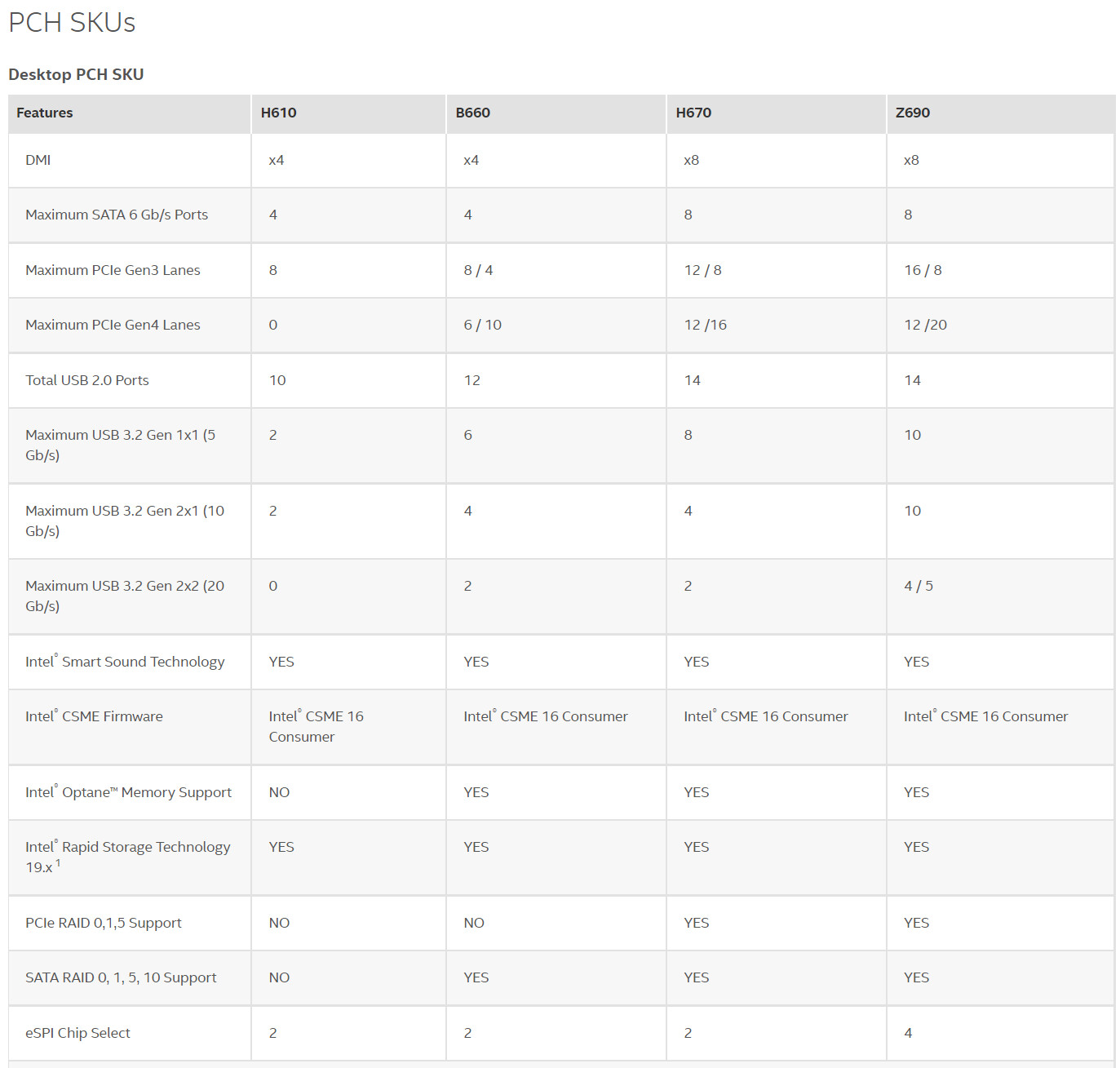TheLostSwede
News Editor
- Joined
- Nov 11, 2004
- Messages
- 18,334 (2.46/day)
- Location
- Sweden
| System Name | Overlord Mk MLI |
|---|---|
| Processor | AMD Ryzen 7 7800X3D |
| Motherboard | Gigabyte X670E Aorus Master |
| Cooling | Noctua NH-D15 SE with offsets |
| Memory | 32GB Team T-Create Expert DDR5 6000 MHz @ CL30-34-34-68 |
| Video Card(s) | Gainward GeForce RTX 4080 Phantom GS |
| Storage | 1TB Solidigm P44 Pro, 2 TB Corsair MP600 Pro, 2TB Kingston KC3000 |
| Display(s) | Acer XV272K LVbmiipruzx 4K@160Hz |
| Case | Fractal Design Torrent Compact |
| Audio Device(s) | Corsair Virtuoso SE |
| Power Supply | be quiet! Pure Power 12 M 850 W |
| Mouse | Logitech G502 Lightspeed |
| Keyboard | Corsair K70 Max |
| Software | Windows 10 Pro |
| Benchmark Scores | https://valid.x86.fr/yfsd9w |
Although Intel's upcoming 13th generation of desktop CPUs that goes under the code name of Raptor Lake, are expected to retain support for DDR4 memory, it has come to our attention that Intel will make a big push towards DDR5 when the platform launches later this year. Intel is apparently already asking motherboard makers to avoid using DDR4 in combination with the upcoming 700-series chipsets and the only reason for this would be to speed up the transition to DDR5. According to various leaks and rumors we should expect to see support for DDR5 at 5600 MHz for Raptor Lake, which is at least a step in the right direction.
What this doesn't mean, is that Intel has removed support for DDR4 in the CPUs, as it's still very much present and is expected to work fine in 600-series chipset motherboards. As such, there shouldn't be any issues upgrading to a new CPU, at least not after a quick UEFI update. From our understanding, it's partially related to the fact that DDR4 and DDR5 motherboards have quite different UEFI code when it comes to the memory support and in turn it means that the board makers are going to end up spending a lot more time getting their boards working, as is already the case with the 600-series chipsets. We can sort of understand Intel's sentiment here, but we're also expecting to see some motherboards based on the 700-series chipsets with DDR4 support, least not from the likes of ASRock that has always liked to create non-conforming motherboards. However, this also looks like it's the end for DDR4 support from Intel, which wasn't entirely unexpected.

View at TechPowerUp Main Site
What this doesn't mean, is that Intel has removed support for DDR4 in the CPUs, as it's still very much present and is expected to work fine in 600-series chipset motherboards. As such, there shouldn't be any issues upgrading to a new CPU, at least not after a quick UEFI update. From our understanding, it's partially related to the fact that DDR4 and DDR5 motherboards have quite different UEFI code when it comes to the memory support and in turn it means that the board makers are going to end up spending a lot more time getting their boards working, as is already the case with the 600-series chipsets. We can sort of understand Intel's sentiment here, but we're also expecting to see some motherboards based on the 700-series chipsets with DDR4 support, least not from the likes of ASRock that has always liked to create non-conforming motherboards. However, this also looks like it's the end for DDR4 support from Intel, which wasn't entirely unexpected.

View at TechPowerUp Main Site










